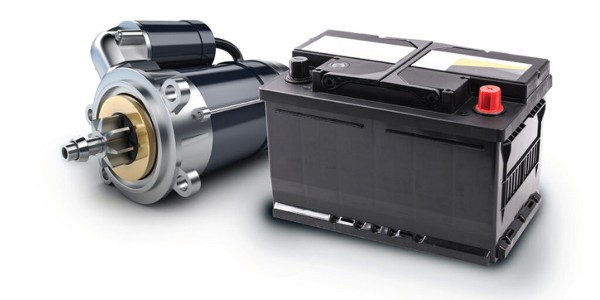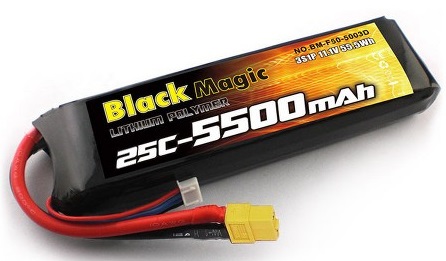In this article, we will discuss the C rate of a battery in great detail, such as how to calculate the C rate of a battery pack and how to choose an ideal C rate battery for your application.

What is the C rate of a battery?
The C rate measures how quickly a battery can be charged or discharged. It is expressed as a multiple of the nominal capacity of a battery. Typically, the nominal capacity is measured in either mAh(milliampere-hours) or AH(ampere-hours).
C-rate gives us the rate at which a battery is discharged relative to its maximum capacity. 1C rate means the entire battery discharges within 1 hour, irrespective of its capacity.
For a battery with a capacity of 10 Ah, a 1C rate equates to a discharge current of 10 Amp. For a battery with a capacity of 1 Ah, discharging it at 1C rate means the discharging current is 1A. In both cases, discharge time will be the same, i.e., 1 hour.
If the above batteries are discharged at a 2C rate, they will discharge within 30 minutes. At 4C rate, they will take 15 minutes to discharge, and so on.
It’s possible to discharge a battery at a C rate of less than 1. At C/2 rate, it will discharge in 2 hours. At C/4 rate, it will take 4 hours, and so on.

The C rate at which a battery will discharge depends on your application and use case. A digital watch requires very little current to operate than the starter motor of a car. Hence, its battery discharges at a very small C rate(~0.05) compared to the battery of a car(5C-10C). That’s the reason for the difference in battery size as well.

But at the same time, the watch runs continuously, whereas the starter motor runs only during ignition.

Now, the maximum C rate at which you can discharge a battery depends on its type and rating. This maximum C rating is mentioned on the battery itself. If it’s not mentioned on the battery or the datasheet, you can easily calculate it using the battery’s nominal capacity and maximum discharge current formula. (Explained in next section)

If a battery is charged or discharged at a higher C rate than it is rated for, it can overheat the battery. In some cases, it might even explode.
C rate formula
In many cases, the maximum and minimum C rate is mentioned in the datasheet(instead of the current rating) of the battery pack. Whatever you do, always discharge the battery within this limit.
If it is not mentioned anywhere, you can calculate the C rate at which you are discharging the battery from its capacity and discharge current by using this formula:
C rate = Charging or Discharging Current / Nominal Capacity
C rate (max) = Charging or Discharging Current(max) / Nominal Capacity
Example 1: The device draws a steady current of 1A. The capacity and maximum C rate of the battery are 2500 mAH and 2C, respectively. Let’s calculate the discharge C rate for this application:
C rate = 1A / 2.5 Ah = 0.4 C
This is within permissible limits. Now, if you want to calculate the time it will take for the battery to fully discharge, use the chart given above or the formula given below.
C rate and time relation formula:
Time = 1/C rate
In this example:
T = 1/0.4C = 2.5 hour
Example 2: The device draws a steady current of 1mA. The capacity and minimum C rate of the battery are 250 mAH and 0.2 C, respectively. Let’s calculate the discharge C rate and time for this application:
C rate = 1mA / 250 mAh = 0.04 C
This value is too low. The battery that we have has a minimum C rate of 0.2C. So, a battery with a lower C rate is needed in this application.
Calculate the maximum current from C-rate
You can easily calculate the maximum charge/discharge current of a battery from its C rating. Just multiply the battery capacity with the C-rating mentioned on the battery back.
Example 1: Battery A has a capacity of 5600mAh and a C rating of 4C. Going by the formula:
Maximum discharge current = 4C × 5600mAh = 22,400 mA or 22.4 amps of current.
Example 2: Battery B has a capacity of 100 mAh and a C rating of 0.2C. Going by the formula:
Maximum discharge current = 0.2C × 100mAh = 20 mA.
Note: It is advised to calculate the C rate of your battery pack and not blindly follow the manufacturer because the C rate can change over time with the change in the internal resistance of the battery.
FAQs
What is the C rate of a AAA, AA, and 18650 battery?
The typical C rate of a standard AA or AAA battery is between 0.25C and 0.5C. 18650 has a C rate of 1C.
Which battery generally has a higher C rate?
Lithium-based batteries like LiPo and lithium-ion batteries generally have a greater tolerance to higher current discharge rates and higher current charge rates.
Having a high C rate always good?
No, having a high C rate is not always good. For example – The battery used in a watch needs to have a low C rate as the requirement is low, and we also want the battery to last as long as possible without needing to replace the battery. So, in this case, a battery with small C rate is used.
What are the advantages of having a high C rate for the battery?
A battery with a higher C rate can give higher current output without any internal damage to the battery and will have a lower voltage drop under the load circuit.
